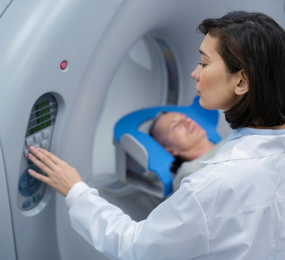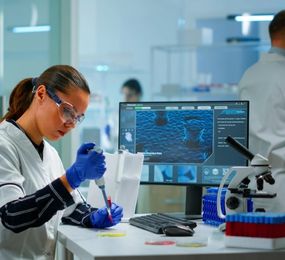Traditional batch processing has long been the mainstay of biomanufacturing. However, a new wave of innovation is making waves – continuous bioprocessing. This revolutionary approach promises to transform large-scale production by streamlining processes and maximizing efficiency.
Continuous Flow, Enhanced Efficiency:
Unlike batch processing's stop-and-start cycles, continuous bioprocessing operates uninterruptedly. Fresh nutrients are continuously fed into the system, and the desired product is harvested constantly. This approach offers several key advantages:
-
Increased Productivity: Continuous operation eliminates downtime between batches, leading to a significant boost in product yield per unit time.
-
Improved Process Control: Continuous systems allow for real-time monitoring and precise control over process parameters, ensuring consistent product quality.
-
Reduced Costs: Continuous processing utilizes smaller equipment and eliminates the need for cleaning and setup between batches, potentially leading to lower production costs.
Embracing Scalability:
Continuous bioprocessing is particularly well-suited for large-scale production due to its inherent scalability. Bioreactors and other processing units can be easily designed and modularized to accommodate larger production volumes. This scalability is crucial for meeting the growing demand for biopharmaceuticals and other bioproducts.
Challenges on the Road to Adoption:
Despite its promise, continuous bioprocessing faces some challenges:
-
Complexity: Designing and implementing robust continuous processes can be complex, requiring specialized expertise and careful integration of various unit operations.
-
Process Development: Adapting existing batch processes for continuous operation can be a significant hurdle, requiring extensive research and development efforts.
-
Regulatory Considerations: Regulatory bodies are still adapting to the nuances of continuous bioprocessing, and establishing clear guidelines is essential for broader adoption.
The Road Ahead:
The bioprocessing industry is actively addressing these challenges. Advancements in automation, control systems, and single-use technologies are simplifying continuous bioprocessing. Additionally, ongoing collaboration between researchers, engineers, and regulatory bodies is paving the way for the widespread adoption of this transformative technology.
Continuous bioprocessing holds immense potential for revolutionizing large-scale biomanufacturing. By embracing its advantages and overcoming the existing challenges, this technology can usher in a new era of efficiency, scalability, and cost-effectiveness for the bioproduction of life-saving drugs and innovative bioproducts.
To register or learn more about the Forum please check here: https://bit.ly/3WRMLFS.
For more information and group participation, contact us: [email protected]
















